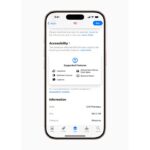
Image Source: Pixabay
With accessibility being one of the most talked-about subjects in the modern web design conversation, it’s hard to imagine a time when it was a foreign concept. Accessibility should absolutely be at the forefront of your website’s design. Not only does it increase traffic, it also shows clients living with a disability that you acknowledge how valuable they are to your business’s success.
The Benefits of Prioritizing Accessibility
When you prioritize accessibility on your website, it ensures visitors from all walks of life can use your site with ease. People living with a disability aren’t an after-thought in your design and development process. Instead, their needs and wants are at the forefront of every decision.
Getting certified in accessible web design can advance your career. The mindset shift that comes with learning how to design for digital accessibility helps you go from seeing accessibility as only for those living with a disability, to realizing it’s just as beneficial for those without. As a result, you’ll naturally implement accessibility standards into your designs because you see the benefit for both audiences.
This practice can boost your career and separate you from your competition, whether you’re applying for a senior web designer position, hoping to join a startup, or have plans to break out as a freelancer. Furthermore, designing for digital accessibility improves your website’s SEO. Search engines rank websites that meet accessibility standards higher than those that don’t. Also, accessibility significantly enhances the user experience, and that too betters your website’s ranking.
How to Improve Accessibility on Your Website
Making the extra effort for accessibility when designing your website contributes to an excellent designer reputation and empowers visitors from all backgrounds to use your site confidently. Here are four ways to improve accessibility on your website.
Ensure compatibility with assistive technology
Assistive technology is any tool that aids a person living with a disability to engage in daily tasks and activities. So, you must design your website to accommodate assistive technology like what students use in the classroom. Ensure your site is set up for those using:
- Alternative keyboards
- Mobility aids
- Text to speech reading software
- Graphic organizers
- Magnifiers
- Mobile apps that assist organization and memory function
- Hearing aids or personal FM transmitters
- Large print materials
Choose appropriate visual elements
You may be tempted to try bold colour schemes, interactive elements, animation, and crazy font combos, but don’t give in. You should choose visual aspects for your website that are conducive to accessibility. These elements include:
- Choosing colour schemes that accommodate colour-blind readers
- Refraining from animation that triggers seizure disorders
- Creating accessible labels on any forms
- Using accessible fonts and font sizes
- Using white space and contrast appropriately
- Using captions for video content and alt text for images
Pay special attention to navigation
Easy navigation is a critical component of accessibility. Whether a visitor is living with a disability or not, your website navigation should be clear, consistent, and easy for visitors to find what they’re looking for.
Accessible navigation structures are:
- Accessible through voice recognition
- Mobile-friendly
- Set up with keyboard navigation and keyboard shortcuts
- Backed by a sitemap
You can build solid website navigation by first mapping out your customer’s journey. Within this journey map, you’ll detail how visitors move through your website. You can then mirror your website navigation structure to how your target audience would navigate your site.
Rely on brand consistency
Brand consistency improves your customer relationships and establishes your brand as one of the top in your industry. Making accessibility a part of your brand consistency strategy only strengthens it.
Create brand guidelines that include accessibility standards. This will ensure that every piece of content you put out meets these standards, and that, in turn, makes it so clients see your brand in a positive light. It’s a beautiful thing when your brand is known for making everything you create and do accessible to everyone.
Conclusion
Designing for digital accessibility requires serious attention to detail and a genuine interest in and commitment to providing an equally incredible website experience for those living with and without a disability. Take some time to incorporate accessibility standards into your site design to ensure all visitors feel empowered.
Discover more from TechBooky
Subscribe to get the latest posts sent to your email.







